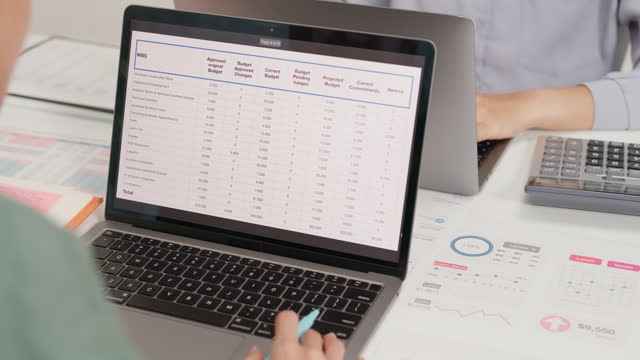In the tapestry of acronyms that adorn the fabric of both professional and personal communication, “PO” appears as a chameleon-like abbreviation, donning different meanings across various contexts. “What Does PO Stand For?” is not just a question—it’s an exploration into the versatile roles this shorthand plays in diverse fields, from commerce to healthcare. This article is tailored to unravel the threads of ambiguity surrounding PO, and present you with a clear, definitive understanding of its applications.
Our expertise is rooted in a thorough grasp of industry-specific lingo and the adaptability of such terms in everyday usage. We embark on a linguistic excavation to reveal the definitions of PO that hold sway in business transactions, medical discussions, and beyond. The acronym serves many masters, and with our guide, you will command a nuanced comprehension of its significance in each unique domain.
The value of this content lies in its power to transcend mere explanation. We aim to provide not just clarity, but context—illuminating the relevance of the PO acronym in practical scenarios, and offering insights into how its correct interpretation can streamline communication, prevent misunderstandings, and facilitate smoother operations in multiple spheres.
As your curiosity unfurls with each paragraph, our narrative will illuminate the myriad interpretations of PO. We encourage you to delve into the subtleties of this seemingly simple acronym, for in its depths, you will discover knowledge that is both foundational and profound.
We invite you to join us on this enlightening journey, as we decode the enigmatic PO. By the conclusion of this article, you will not only possess an answer to “What Does PO Stand For?” but also the confidence to apply this knowledge with precision and authority in your daily life. Let the exploration commence.
Contents
Understanding Purchase Orders
Definition and Purpose
A purchase order (PO) is a commercial document issued by a buyer to a seller, indicating the type, quantities and agreed prices for products or services. It is used to control the purchasing of products and services from external suppliers.
In short, a PO acts as a formal request to purchase goods or services. It serves as a legal agreement between a buyer and seller, containing key details about what is being ordered, price, terms, delivery date, and more.
Some key purposes and uses of purchase orders include:
- Formalizing requests to vendors for goods/services
- Documenting pricing and other agreed terms
- Tracking outstanding orders and shipments
- Monitoring spending against budgets
- Ensuring accurate invoicing and payments
Overall, POs help facilitate structured B2B transactions and set clear expectations between buyers and suppliers. They provide vital documentation that can be used for record keeping, product receipt, and invoicing.
Essential Elements of a Purchase Order
While specific PO formats can vary, most purchase orders contain certain standard pieces of information:
- Date of order – The date on which the PO is issued by the buyer
- Description – Details about the requested goods/services, including product specs, models, and other identifiers
- Quantity – The number of units/amount being ordered
- Unit price – Per item price, extended to show the total line amount
- Total price – The grand total due for the PO
- Payment terms – Payment due date, credit terms, payment method
- Buyer/seller details – Name and contact info for purchasing organization and supplier
- PO number – Unique number assigned to identify the order
- Delivery date – Requested delivery or performance date
- Shipping details – Special shipping instructions (optional)
These core elements help define the who, what, when, where, and how much of the purchase order transaction. Having standardized details on POs improves clarity between the involved parties.
Importance of PO Numbers
Each purchase order contains its own unique PO number, used to identify and track the order through the purchase lifecycle. The PO number is crucial for:
- Reference – Provides a concise way to refer to the order in communications.
- Tracking – Enables tracking of order status and fulfillment.
- Searching – Simplifies lookup of order history and details.
- Error prevention – Avoids confusion and mistakes through unique identifiers.
- Legal value – Supports contract enforceability of the PO.
Both buyers and suppliers benefit greatly from the clear tracing and documentation provided by purchase order numbers. Overall, the PO number creates efficiency, accuracy and transparency for all parties involved in the purchasing process.
Creating and Managing Purchase Orders
Now that we’ve covered the definition and key elements of purchase orders, let’s explore the actual process of creating and administering them.
Manual vs. Automatic PO Numbering
Purchase order numbers can be assigned in two primary ways:
Manual numbering – PO numbers are created and assigned sequentially by the purchasing department as needed. This allows flexibility but increases chances of duplication or gaps in sequencing.
Automatic numbering – PO numbers are system-generated through purchase order software, ensuring each one follows a sequential pattern without overlaps or missing numbers. Automated numbering provides more control and accuracy.
Creating a Purchase Order
When creating a new purchase order, there are some best practices to follow:
- Fill in all essential elements – Ensure PO includes all core details like date, product info, price, terms, etc.
- Leverage templates – Use PO templates with pre-defined fields and formatting.
- Stay organized – Keep POs structured with clear sections and readable fonts.
- Be concise – Use clear language and avoid excessive wordiness on POs.
- Allow review – Route POs through proper approval channels before issuing to supplier.
Purchase orders are typically created through paper forms, digital documents, or within dedicated PO software tools. The right format depends on the systems and processes already established.
PO Systems and Software
Many organizations manage purchase orders using specialized software or integrated enterprise systems that add automation and extra functionality like:
- Configurable templates – For creating standardized POs
- Workflows – Routing POs for review and approval
- Integration – Connecting with accounting, inventory, ERP systems
- Notifications – Email alerts when POs are updated
- Reporting – Insights into spending, vendors, purchasing patterns
this software improves accuracy, oversight, and productivity throughout the PO process.
The Advantages of Using Purchase Orders

Now that we’ve outlined what POs are and how they’re created, let’s explore some of the major benefits that purchase orders provide:
Improved Order Tracking and Visibility
The unique PO number enables easy order monitoring and management. Both buyers and suppliers can quickly access the status of any order throughout its lifecycle.
Streamlined Communication and Vendor Management
POs allow buyers and sellers to get on the same page with regard to product specs, prices, delivery, terms and more. This facilitates efficient communication and helps build structured relationships with vendors.
Legal Protection and Contractual Agreements
A PO represents a formal commitment between the involved parties. This provides legal protection in case there are any disputes over what was ordered and agreed upon.
Enhanced Auditability and Financial Controls
The documentation provided by POs creates clear audit trails and improved spend visibility. This allows organizations to better track budgets and control maverick spending.
Potential Challenges of Purchase Orders
While extremely beneficial for procurement practices, purchase orders also come with some potential downsides and challenges:
Administrative Burden for Smaller Businesses
Generating, sending, tracking POs takes time and resources. This can create extra overhead for smaller companies with limited staffing.
Potential Delays in the Purchasing Process
The added steps of issuing and approving POs before ordering can slow down the purchasing timeline in some cases.
Ensuring Vendor Adherence to PO Terms
Suppliers don’t always follow the specifics laid out in the PO, creating disputes over incorrect or inadequate deliveries.
Real-World Applications of Purchase Orders

To provide more perspective, let’s walk through some examples of POs being leveraged in real-world business scenarios:
Purchasing Office Supplies
A company needs to purchase printer paper, pens, and other office materials from an office supply vendor. The purchasing manager creates a PO listing the itemized products needed, quantities, per unit pricing, delivery address, accounting codes, and total PO amount. This PO gets sent to the vendor to confirm the order details and terms.
Ordering Inventory for Retail
A retailer needs to stock up on inventory of shirts, pants, jackets, etc. for the new season. The retail buyer creates POs for the various apparel manufacturers detailing the products, sizes, and quantities needed. The POs ensure the supplier delivers the exact right inventory at previously agreed prices.
Hiring a Contractor for Construction
A store owner is having construction done to remodel their shop. The contract with the construction company is formalized through a PO that defines the statement of work, timeline, materials included, price, and payment schedule. This PO acts as a legally binding agreement while work is completed.
Additional Considerations
While we’ve covered POs extensively, there are some additional nuances to keep in mind:
Legal Considerations
Purchase orders may need to meet certain local laws regarding format, taxes, electronic signatures, etc. to provide full legal standing. It’s important to verify PO requirements.
Different PO Types
There are variations like blanket POs for managing recurring purchases from a supplier over time. Or rush POs for expedited processing of urgent orders.
The Future of POs
Emerging technology like e-procurement and automated workflows will continue shaping the future digitization of purchase orders and supplier integration.
In summary, purchase orders are a pivotal facet of the procurement process for businesses of all sizes and across all industries. By providing enhanced clarity, traceability and control over spending, POs deliver significant strategic and operational benefits. This overview covers the key aspects and applications of POs, but there are always new lessons and efficiencies to unlock as processes evolve. Ultimately, any organization can benefit by leveraging POs to improve the way goods and services are purchased.

Trayce served as a grassroots leader and activist in Texas as President of Dallas and Texas Eagle Forum.
Trayce is Mom Caucus Member, Texas Conservative Mamas, Texas Conservative Grassroots Coalition Leader, and Grassroots America Champion of Freedom Honoree.
She currently serves as the Eagle Forum National Issues Chair on Human Trafficking.
Trayce received a Bachelor’s Degree in Marketing from Texas A&M
Currently, she homeschools her youngest child age 13 and graduated her six oldest children, ages 31 to 19.







